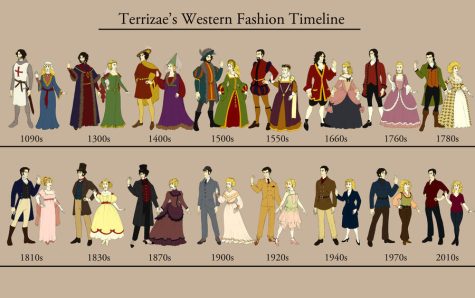What social media means for the fashion industry
One way to predict what future trends will be in the fashion industry is through the 20-year fashion rule. The adage of history always repeating itself is proven through recurring fashion trends. However, ever since social media hit the fashion scene in the early 2000s, the old 20-year rule has slowly been disintegrating. The impact of social media on the fashion world has been especially emphasized since 2020 when platforms like TikTok took over the entertainment scene which leaves fashion lovers and predictors questioning what the future of fashion will look like.
The 20-year fashion rule presents the idea that fashion trends from a certain era will return two decades later. This does not necessarily mean that all the fashion trends from 20 years ago will be popularized again rather that elements of it will be incorporated with new fashion concepts; it is a modern take on the past. An example of this would be the revival of early 2000s fashion from 2020 to 2021. In its comeback, early 2000s fashion was reborn in the form of bright colors, low-waisted jeans, Juicy Couture, and more.
2020 to 2021. In its comeback, early 2000s fashion was reborn in the form of bright colors, low-waisted jeans, Juicy Couture, and more.
However, after the 2000s fashion revival, soon after there was a return to early 2010s fashion, an abnormal and sudden trend. This hurried trend was caused by social media’s new influence in the fashion world. In years past, disseminating cultural let alone fashion-related knowledge moved at a slower pace. Information on fashion came through fashion magazines that were released monthly and through personal observation, leaving enough time for a fashion trend to remain for years. When social media entered the global scene, anyone could take fashion inspiration through the click of a button, and fashion trends that once took years to be fully developed are now considered old news 6 months after its debut.
Not only does this phenomenon have unknown future implications on the fashion world, but also on the environment and the conditions of underpaid workers. Because this generation is exposed to new fashion trends at every waking hour, they feel the need to keep up with this fast-paced scene. This already has had grave environmental effects because of the methods fast fashion companies employ to produce then quickly discard garments as well as adding onto existing issues of companies underpaying their workers and placing them under questionable conditions. Although the fashion scene is not foreign to volatile changes, it is important this generation reflects on the new normal of buying and discarding clothing and what its future implications are.


